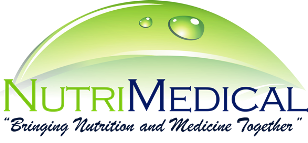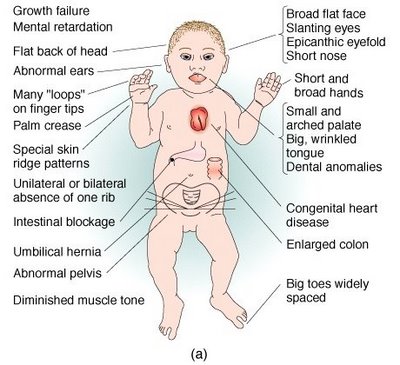Down Syndrome Protocol
Protocols for Metabolic Wellness with Down Syndrome
Make a smoothie:
AgeLess
LifeSupport
AntiAgeMax
NutrImmune 26Y
Ultra Thiamine B1
Omega Supreme Pro
Cell Detox Glutathione
Cell Defense PLUS
Nutriodine
VitaMineralMIX
Advanced:
MitoThyroid
NeuroGEN
Minerals PLUS
Cogniton Plus
Brain Power
NutriTRALA
NeuroGEN
Super Folate
Power Methyl B12
CDP Choline .
Uridine
Ultra ThiamineB1
PRINCIPALS OF DOWN SYNDROME METABOLIC SUPPORT:
•1] Correct Deficiencies – Mg, Zn, Se, FolinicAcid …
•6] Oral and Systemic Enzymatics
•2] SOD 1 Zinc / Copper Superoxide Dismutase àNO/OONO PeroxynitrateSynthaseFree Radical Glial Cell Neuron Damage àNeuron apoptosis and dendrite and synapse atrophy
•4] MNB Minibrain a lso colocalizes with dynamin1 (DYRK1A), a substrate of MNB kinases – Regulate Dendrite Differentiation
——————————————————————————————————————————-
DOWN SYNDROME ::
Symptoms The symptoms of Down’s syndrome vary from child to child. They can be intense to mild, depending on the body’s constitution. It is obvious to note that children with Down’s syndrome have a low IQ, and decreased mental activity. These children cannot make informed decisions, as activities controlled by the brain are jeopardized to some extent. Moreover, there are certain kids which show delayed motor development responses along with delayed development of language ability. What’s more, the power to make a cognitive analysis also fails at times. Some of the common symptoms seen in the babies suffering from Down syndrome include: – Presence of deep creases in either both or one of the palms – Occurrence of white spots on the iris of the eye. However, this is not a conclusive symptom alone. – Poor development of hands and feet, as the result, the child develops small palms and hands. – Kids suffering from Down syndrome have loose muscles and ligaments, giving them a deformed appearance altogether. – Kids suffer from Celiac Disease – Increased risk of development of congenital heart disease – Development of hearing problems – Kids with Down’s syndrome also suffer from eye problems, such as cataracts, thyroid dysfunctions, skeletal problems, dementia, etc. Down’s syndrome is a genetic disorder, and you can’t simply reverse the genetic information all by yourself. All you can do is take care of your child and give them all the love and support they require. Their rehabilitation is important, which is why you need to be in constant touch with a medical professional. Any child with Down’s syndrome will always be a part of society, and you can do your bit to make them lead as normal a life as possible. Accept every child with Down’s syndrome for what he or she is. That could be the best treatment these children may ever need.
Down Syndrome – Mongolism Or Trisomy 21
Down syndrome or mongolism is a condition in which a person is born with certain distinctive features : flat face, short neck, and a degree of mental delay (mental retardation). Although Down syndrome cannot be treated, most patients can lead a normal life. With the proper care and help they need, children with Down syndrome can have a spectacular growth and development and can become healthy and happy adults. Down syndrome was described in 1861 by Seguin in 1866 by Langdon-Down who specify the clinical features of this syndrome and in 1959, Lejeune specifies the chromosomal etiology.Frequency of Down syndrome is 1.5 per 1000 infants and sex distribution is 3 to 2 for male gender. It is considered that in the occurrence of Down syndrome is involved advanced maternal age, especially over the age of 35. At mothers aged 28 years it is recorded an increased frequency of births with Down syndrome, but this corresponds to a maximum number of births at this age. The risk increases with maternal age, as follows:
- Under the age of 30 years, the risk of having a baby with Down syndrome is less than 0.1%;
- Between 30 and 40 years, the risk of having a baby with Down syndrome is less than 1%;
- Over 40 years, the risk of having a baby with Down syndrome is more than 1%;
- Over 45 years, the risk of having a baby with Down syndrome is 3,3%;
- Over the age of 50 years, the risk of having a baby with Down syndrome is about 15%.
Down Syndrome Causes And Karyotype
- Free and homogeneous trisomy 21 in 92.5% of cases of Down syndrome. These cases are generally cases with de novo appearance, in which is involved maternal age. Karyotype is 47XX+21 or 47XY+21 and the cause is represented by a chromosomal non-disjunction of maternal origin (90%) or a chromosomal non-disjunction of paternal origin (10%).
- Mosaic trisomy 21 in 2.5% of cases of Down syndrome. These are sporadic cases, showing karyotype 47XX+21 / 46XX or 47XY+21 / 46XY. Phenotypic manifestations in this type of Down syndrome are more attenuated.
- Trisomy 21 with translocation in 5% of cases of Down syndrome. These are cases with de novo appearance, in which is involved a transmission of a paternal translocation. The karyotype is 46XX or 46XY with a translocation between a supernumerary chromosome 21 and, most commonly, a chromosome of group D (pair of chromosomes 13, 14 and 15).
- Partial trisomy 21, very rare and is represented by cases of Down syndrome where is an excess of genetic material represented by an extra chromosome 21 which has deletions on q arms.

The Clinical Presentation Of Down Syndrome (signs and symptoms)
- Short stature : the child usually have slow growth rate, and in adulthood their height is lower than average;
- Low muscle tone : a child suffering from Down syndrome may have less muscle strength than other children of the same age;
- Short neck, thick with fat and excess skin : usually this feature becomes less obvious as the child grows;
- Short and stocky limbs, some children may have a wider space between the thumb and second finger of the foot;
- One fold in the central part of the palm : it is called the simian line.

- Cardiac: atrioventricular septal defect, ventricular septal defect, interatrial septal defect, patent ductus arteriosus;
- Gastrointestinal: duodenal stenosis, anal imperforation, celiac disease, Meckel diverticulm, omphalocele and Hirschprung disease;
- Genitourinary: micropenis, cryptorchidism, renal malformations and hypospadias;
- Eye: cataracts, astigmatism, myopia, strabismus and glaucoma;
- Endocrine: Hashimoto’s thyroiditis, hypothyroidism, hyperthyroidism;
- Hematologic: acute lymphocytic leukemia, acute non-lymphoblastic leukemia,
megakaryocytes leukemia; - Immunological: various immune deficiency;
- Metabolic: hyperuricemia, diabetes, obesity;
- Sterility in males patients with Down syndrome;
- Alzheimer’s disease.
Fascial Features:
-
Ears with modified form : usually small and with a low placement ;
- Abnormal mouth and tongue: mouth is often open, exfoliative glossitis, tongue with scrotal appearance (in adolescents and adults), pseudomacroglossia;
- Flattened nasal bridge : flat nose portion located between the two eyes (nasal bridge) is frequently clogged;
- Brushfield’s spots : colored spots on the iris, these spots are not affecing the sight;
- Malformation of the teeth: baby teeth may grow later and in an unusual way, agenesis of lateral incisors.

Down Syndrome Antenatal Diagnosis

